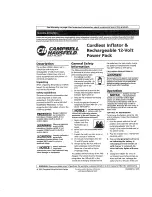
28
8.
Support collapsed driveline off the
ground by rotating driveline hook
holder under driveline and letting
driveline rest in deck for storage.
GENERAL OPERATING INSTRUCTIONS
It is important that you have familiarized
yourself with
the Operator’s Manual,
completed the Operator’s
Checklist, properly
attached cutter to your tractor, made
leveling adjustments, and preset your
cutting height before beginning a running
operational safety check on your TITAN
Rotary Cutter.
The running operational safety check may
now be done. It is important that at any time
during this safety check you detect a
malfunction in either the cutter or tractor
that you immediately shut the tractor off,
remove its key, and make necessary repairs
and/or adjustments before continuing on.
Make sure before starting the tractor that
the park brake is engaged, the power take-off
is disengaged, and the cutter is resting on the
ground. Start the tractor and set the engine
throttle speed at a low idle. Raise the cutter
with the
tractor’s
rear hydraulic lift control
lever to transport position making sure that
the power take-off shaft does not bind and
does not contact the cutter frame. Lower the
cutter to the ground and at a low engine
speed engage the power take-off. If
everything is running smoothly at a low idle,
slowly raise the cutter to transport height
checking for bind or chatter in the driveline.
Lower the cutter to the ground and increase
the tractor’s engine rpm until
it reaches the
cutter full power take-off operating speed of
540 rpm. If everything is still running
smoothly, once more raise the cutter to
transport height to check for driveline bind
or chatter. Lower the cutter to the ground,
return the engine to a low idle, and
disengage the power take-off.
Position the adjustable stops on the
tractor’s
3-point lift lever so the cutter can be
consistently returned to the same cutting
height and transport height.
You should now be ready to transport your
cutter to the site at a safe ground speed. On
roadways, transport in such a manner that
faster moving vehicles can easily see you and
pass you safely. Reduce your speed when
traveling over rough and hilly terrain. Avoid
quick or sharp steering corrections. Take
extra care to ensure that
the mower doesn’t
come into contact with obstacles such as
trees, buildings, or fences. Use accessory
lights and appropriate reflective devices to
provide adequate warning to pedestrians
and other vehicle operators when traveling
on public roads and in the dark.
Comply with all local, state, and federal laws.
It is important that you inspect the area
where you will be cutting and clear if of
safety hazards and foreign objects.
















































